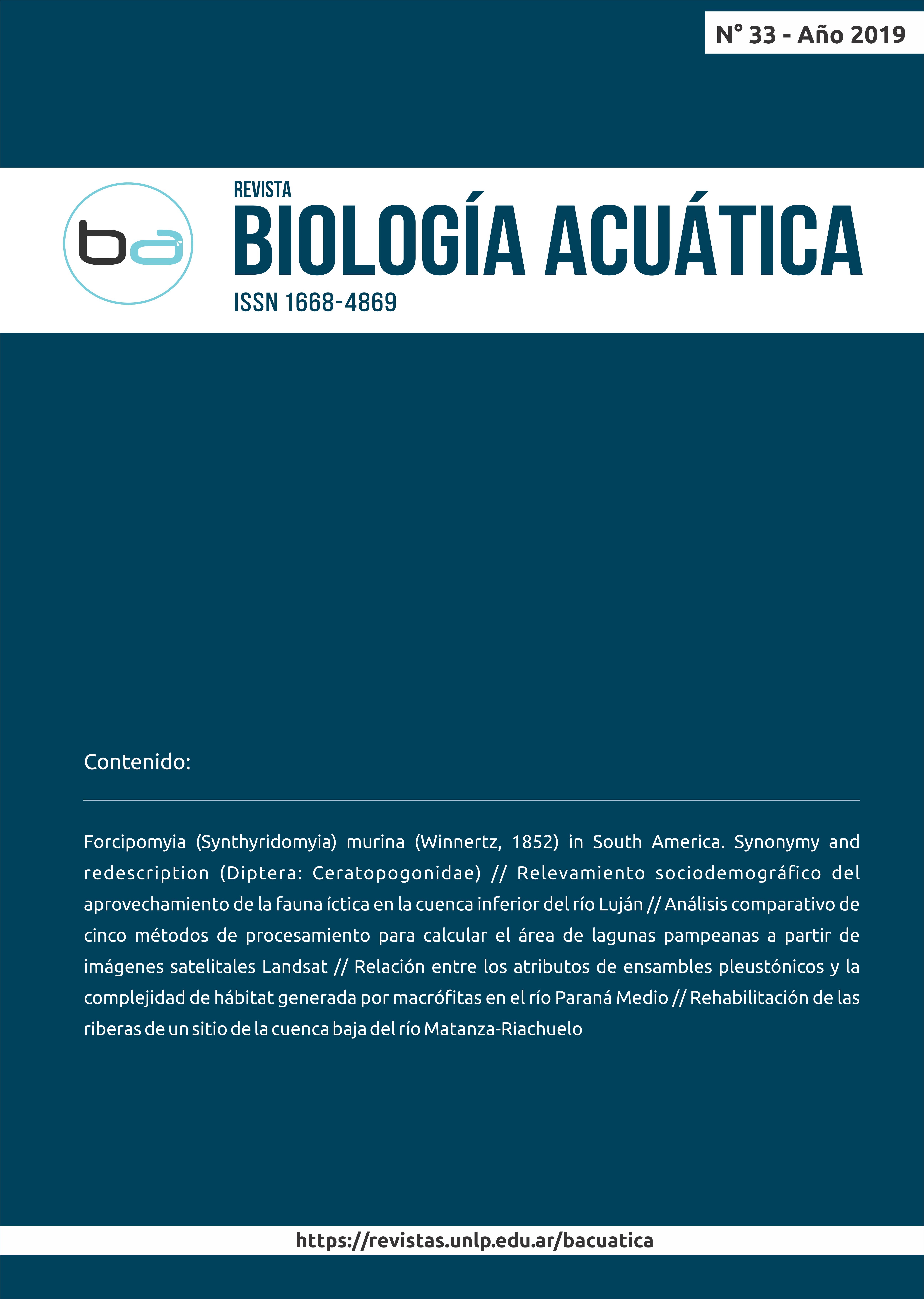Análisis comparativo de cinco métodos de procesamiento para calcular el área de lagunas pampeanas a partir de imágenes satelitales Landsat
DOI:
https://doi.org/10.24215/16684869e003Keywords:
Image classification, La Barrancosa shallow lake, pampean shallow lakes, variabilityAbstract
Pampean shallow lakes exhibit very variable dynamics (seasonally, annually or cyclically) in various aspects: depth, free surface, turbidity, concentration of nutrients and Chl-a, suspended solids, conductivity, among others. Preliminary works indicate an inverse relationship between the volume of water and the values of trophic status indicators, linking rainfall and winds with the eutrophy degree of these lakes. The knowledge of the complex relationships between biological and geophysical processes is difficult because they are nonlinear and exhibit delays that are not yet fully identified nor quantified, with possible feedback between these processes. The understanding of the interaction dynamics between climate and lentic ecosystems is fundamental for their conservation, for resource utilization, and for services preserving. A first essential step to relate the evolution of the shallow lakes to precipitations is to achieve on reliable algorithms for the processing of satellite images. We introduce here a comparative analysis of five computational methods for estimating the area of free water surface of the La Barrancosa shallow lake in Landsat images (4TM, 5TM and 7ETM +) throughout the period 1984-2004, based on the application of NDWI (Normalized Water Difference Index) and MNDWI (Modified Normalized Water Difference Index) indices, as well as supervised (Maximum Likelihood) and unsupervised (ISODATA and K-means) classification methods. The performed analysis allowed us to evaluate the ability of each one to follow the dynamics of the surface area and to identify the method that requires less computational time and minimizes the possibility of error in the implementation.





















